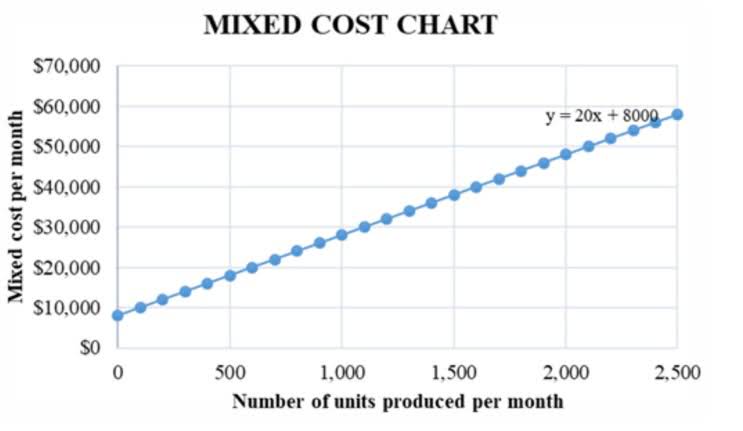
However, it does effectively create two retained earnings accounts, one for appropriated retained earnings and one for unappropriated retained earnings. As a percentage of sales, operating expenses increased 240 basis points to 42.2%. Selling expenses increased $76.7 million or 24.3%, primarily due to higher global demand creation expenditures. General and administrative expenses increased $186.3 million or 14.5%, primarily driven by labor and increased facility costs, including rent and depreciation.
Submit to get your retirement-readiness report.

Bonds, mutual funds, fixed deposits, stocks, real estate, takeovers, and investing in startups are all ways you can make your money work for you. When this happens, the stock left over — which has suddenly become rarer — often increases in value. When you’re able to produce more goods and services, you should be able to expand your company and increase profits. Further, companies that can increase their profits often receive higher valuations, which can benefit owners who want to sell a company.
Checking Financial Statement Figures
The first is paid-in capital, or contributed capital—consisting of amounts paid in by owners. The second category is earned capital, consisting of amounts earned by the corporation as part of business operations. An increase or decrease in revenue affects retained earnings because it impacts profits or net income.
Are Retained Earnings Current Liabilities Or Assets?
- A SME is any entity that publishes general purpose financial statements for public use but does not have public accountability.
- Now, how much amount is transferred to the paid-in capital depends upon whether the company has issued a small or a large stock dividend.
- Learn how to find and calculate retained earnings using a company’s financial statements.
- Businesses that pay shareholder dividends will deduct these from their net income to figure retained earnings.
- We can find the retained earnings (shown as reinvested earnings) on the equity section of the company’s balance sheet.
The retained earnings amount can also be used for share repurchase to improve the value of your company stock. In this article, you will learn about retained earnings, the retained earnings formula and calculation, how retained earnings can be used, and the limitations of retained earnings. Regularly assess your retained earnings in the context retained earnings current or noncurrent of your business objectives and shareholder needs, perhaps with the help of financial advisors. The dividend preferences of shareholders can influence retained earnings, especially in dividend-focused industries. For instance, tech startups often reinvest heavily to fuel growth, whereas mature utility companies might pay more dividends.
- The company uses free cash flow to evaluate its business performance and overall liquidity and it is a performance goal in the company’s annual and long-term incentive plans.
- This is just a dividend payment made in shares of a company, rather than cash.
- However, U.S. GAAP is not the only full accrual method available to non-public corporations.
- This book uses the Creative Commons Attribution-NonCommercial-ShareAlike License and you must attribute OpenStax.
- Both are required to judge a company’s financial health but don’t reveal the same thing exactly.
- The company’s filings may be accessed through the Investor Relations page of its website, /investor, or through the website maintained by the SEC at
Noncurrent assets are a company’s long-term investments for which the full value will not be realized within the accounting year. They are typically highly illiquid, meaning these assets cannot easily be converted into cash. Examples of noncurrent assets include investments, intellectual property, real estate, and equipment. Because the adjustment to retained earnings is due to an income statement amount that was recorded incorrectly, there will also be an income tax effect.
That is, the current ratio is defined as current assets/current liabilities. Liquidity refers to the business’s ability to convert assets into cash in order to meet short-term cash needs. Examples of the most liquid assets include accounts receivable and inventory for merchandising or manufacturing businesses. The reason these are among the most liquid assets is that these assets will be turned into cash more quickly than land or buildings, for example. Accounts receivable represents goods or services that have already been sold and will typically be collected within thirty to forty-five days.
Why would retained earnings be considered a non-current asset?
Current liabilities of a company consist of short-term financial obligations that are typically due within one year. Current liabilities could also be based on a company’s operating cycle, which is the time it takes to buy inventory and convert it to cash from sales. Current liabilities are listed on the balance sheet under the liabilities section and are paid from the revenue generated from the operating activities of a company. Scenario 1 – Bright Ideas Co. starts a new accounting period with $200,000 in retained earnings. After the accounting period ends, the company’s board of directors decides to pay out $20,000 in dividends to shareholders. As stated earlier, there is no change in the shareholder’s when stock dividends are paid out.
- For information pertaining to the registration status of 11 Financial, please contact the state securities regulators for those states in which 11 Financial maintains a registration filing.
- These are only some of the factors that may affect the forward-looking statements contained in this news release.
- They are a measure of a company’s financial health and they can promote stability and growth.
- Retained earnings are reported in the shareholders’ equity section of a balance sheet.
- Alternately, dividends are cash or stock payments that a company makes to its shareholders out of profits or reserves, typically on a quarterly or annual basis.
- This is to say that the total market value of the company should not change.
What Is the Difference Between Current and Noncurrent Assets?

The entry to Retained Earnings adds an additional debit to the total debits that were previously part of the closing entry for the previous year. The credit is to the balance sheet account in which the $1,000 would have been recorded had the correct depreciation entry occurred, in this case, Accumulated Depreciation. The company will report the appropriate retained earnings in the earned capital section of its balance sheet. It should be noted that an appropriation does not set aside funds nor designate an income statement, asset, or liability effect for the appropriated amount. The appropriation simply designates a portion of the company’s retained earnings for a specific purpose, while signaling that the earnings are being retained in the company and are not available for dividend distributions. The stockholders’ equity section of the balance sheet for corporations contains two primary categories of accounts.
Accounts Payable
A balance sheet is a key financial statement that provides a telling snapshot of what a company owns and owes, as well as revealing how much shareholders have invested in it. During a specific financial period, it reports the business’s revenue, liabilities, and numbers for the shareholders’ equity section. It is not uncommon for capital-intensive industries to have a large portion of their asset base composed of noncurrent assets.
